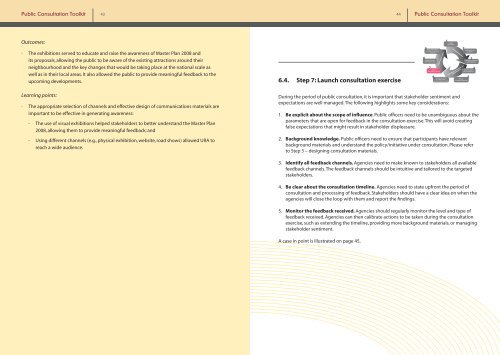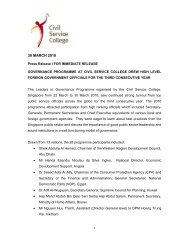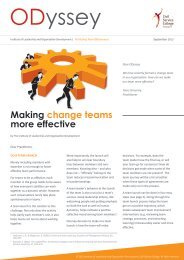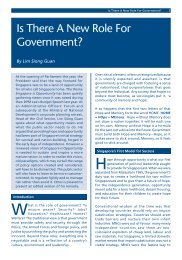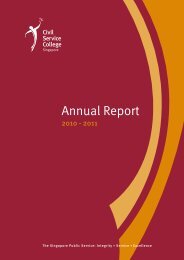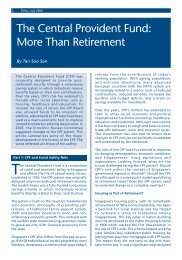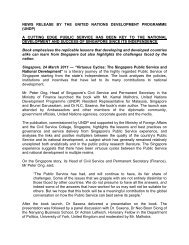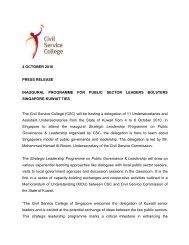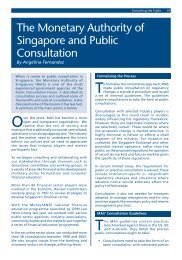Public Consultation Toolkit - Civil Service College
Public Consultation Toolkit - Civil Service College
Public Consultation Toolkit - Civil Service College
Create successful ePaper yourself
Turn your PDF publications into a flip-book with our unique Google optimized e-Paper software.
<strong>Public</strong> <strong>Consultation</strong> <strong>Toolkit</strong> 43 44 <strong>Public</strong> <strong>Consultation</strong> <strong>Toolkit</strong><br />
Outcomes:<br />
• The exhibitions served to educate and raise the awareness of Master Plan 2008 and<br />
its proposals, allowing the public to be aware of the existing attractions around their<br />
neighbourhood and the key changes that would be taking place at the national scale as<br />
well as in their local areas. It also allowed the public to provide meaningful feedback to the<br />
upcoming developments.<br />
Learning points:<br />
• The appropriate selection of channels and effective design of communications materials are<br />
important to be effective in generating awareness:<br />
- The use of visual exhibitions helped stakeholders to better understand the Master Plan<br />
2008, allowing them to provide meaningful feedback; and<br />
- Using different channels (e.g., physical exhibition, website, road shows) allowed URA to<br />
reach a wide audience.<br />
6.4. Step 7: Launch consultation exercise<br />
During the period of public consultation, it is important that stakeholder sentiment and<br />
expectations are well managed. The following highlights some key considerations:<br />
1. Be explicit about the scope of influence. <strong>Public</strong> officers need to be unambiguous about the<br />
parameters that are open for feedback in the consultation exercise. This will avoid creating<br />
false expectations that might result in stakeholder displeasure.<br />
2. Background knowledge. <strong>Public</strong> officers need to ensure that participants have relevant<br />
background materials and understand the policy/initiative under consultation. Please refer<br />
to Step 5 – designing consultation materials.<br />
3. Identify all feedback channels. Agencies need to make known to stakeholders all available<br />
feedback channels. The feedback channels should be intuitive and tailored to the targeted<br />
stakeholders.<br />
4. Be clear about the consultation timeline. Agencies need to state upfront the period of<br />
consultation and processing of feedback. Stakeholders should have a clear idea on when the<br />
agencies will close the loop with them and report the findings.<br />
5. Monitor the feedback received. Agencies should regularly monitor the level and type of<br />
feedback received. Agencies can then calibrate actions to be taken during the consultation<br />
exercise, such as extending the timeline, providing more background materials, or managing<br />
stakeholder sentiment.<br />
A case in point is illustrated on page 45.


